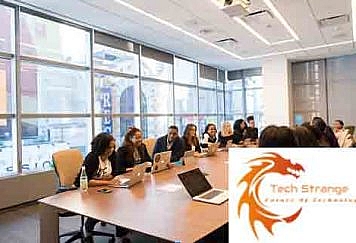Technology has always been a major component of medicine. Throughout human history, we’ve used new developments in technology to help people live longer and healthier lives.
Today’s medical technologies are advancing more quickly than ever. The incredible tools we now have at our disposal have broadened our horizon of possibility and created a new world of medicine. Providers are becoming empowered to help create better health outcomes with their patients and give patients a more positive experience throughout the process.
What does the cutting edge of medical technology look like as we forge ahead into the 21st century? Some bring to mind a sleek, cutting-edge device in a diecast aluminum enclosure, while others are powerful software technologies that help analyze data behind the scenes. Below, we’ll examine five examples of these technologies that span a wide spectrum of the medical field.
-
Spotting and Preventing Errors
“First, do no harm.” That’s the rule every medical professional knows. Yet studies show that medical errors probably cause at least 210,000 deaths per year and may possibly cause almost double that number.
Thus, one of the most important potential uses of new medical technologies is in the prevention of provider errors. The medical technologies of today and the near future can perform critical tasks such as:
- Automatically flagging drugs that have potentially harmful interactions with medication a patient is already taking
- Using electronic medical records to understand a patient’s history more thoroughly and prevent inappropriate treatments
- Managing medications so that providers can ensure appropriate dosages
- Tracking surgery tools to prevent retained surgical bodies
Of course, for these technologies to be effective, providers must implement them correctly, which is why healthcare professionals at all levels need to advocate for technological improvements in their workplaces.
-
Creating New Pathways to Care Access
Lack of access to care is a problem that providers have spent years struggling to address. Additionally, even among patients with sufficient access, convenience is an increasingly significant factor in how patients choose the way that they receive care. Fortunately, a new wave of technological innovations is arriving to help create expanded access to the care that patients need.
Telehealth is one of the major healthcare success stories of 2020, as patients have flocked to electronic doctor appointments in the wake of the coronavirus pandemic. High-definition videoconferencing and ubiquitous mobile devices have created ideal conditions for telehealth’s breakout moment, and Medicare alone has seen a massive uptick in utilization of telehealth services since the pandemic began. However, it remains to be seen to what degree telehealth will become a permanent feature of the healthcare landscape.
Remote healthcare monitoring technologies are also improving access by reducing a patient’s need to travel. Wearable medical devices are another booming market, with hundreds of thousands of Americans opting to send real-time medical updates to their providers. This is particularly important for patients with chronic conditions, for whom wearable devices can be a cost-effective substitute for constant provider visits.
-
Improving Provider-Patient Communication
Effective care requires transparent and readily available communication between the provider and the patient. The new generation of medical technologies is working to bridge the gap between provider visits and create a new system in which patients have access to key information whenever they need it.
Online patient portals are one way that providers are making it easier for patients to access health information and communicate with medical professionals. Using a health portal, patients can view test results, schedule appointments and receive support. In their current state, these portals are far from perfect, but the relevance of their concept is essentially undisputed.
Technologies such as smartphone apps can also empower patients to take control of their health. Some help patients understand and remember their medication, while others track eating habits and exercise to help patients manage their weight. These technologies allow patients to translate their provider’s instructions into a hands-on experience and become an active participants in their health.
-
Deploying Artificial Intelligence and Machine Learning
Artificial intelligence technologies have many potential applications within the medical field. Although most are still in their early stages, they’re among the most exciting and innovative technologies at the cutting edge of medicine.
AI and machine learning haven’t yet become ubiquitous in the medical field, but the technologies are gaining steam. Currently, you’ll find them deployed in contexts such as voice assistants that help people with Alzheimer’s disease, skin scanning technologies that help identify the early stages of melanoma, and robot-assisted physical therapy.
Twenty-first-century healthcare organizations will need the ability to use data and analytics tools to create smarter operational practices and improve patients’ experiences. So-called “big data” tools can perform a wide variety of key medical analytics functions, including:
- Identifying factors that contribute to better or worse patient outcomes
- Flagging unexplained medical phenomena that demand further research
- Reducing costs by identifying wasteful spending
- Analyzing genetic and health records data to predict patients’ health outcomes
Properly deployed, these analytics functions could hold the keys to a new era of data-driven healthcare.
-
Creating Resilience in Healthcare Infrastructure
Healthcare infrastructure must be ready to serve whenever the public needs it. That means that critical healthcare systems must be able to survive adverse conditions. Healthcare facilities, especially in rural areas and developing countries, must be designed to perform predictably in disaster situations and maintain the maximum level of functionality possible.
Technologies such as waterproof electrical junction boxes can help prevent damage to electrical infrastructure during flooding events, while healthcare cybersecurity systems must remain independently operational even during a large-scale cyberattack. Healthcare supply chains, meanwhile, must be designed with multiple redundancies, remote digital access tools, and wide networks of suppliers to ensure functionality in a crisis.
Final Words
Even at a time of unprecedented global challenges, the rapid advance of healthcare technologies provides a reason to be hopeful. As these medical technologies continue to improve, it’s crucial that providers stay current with the latest technological advances that can empower them to create better patient experiences and outcomes.
Follow TechStrange for more!





